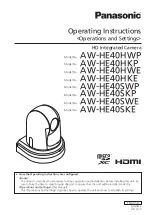
51
Tutorial—T
aking Photographs
Don’t Block the Shot
To avoid dark or partially obscured pictures, keep your fingers and other ob-
jects away from the lens and flash window. Ridges on the camera grip keep
your fingers from blocking the photocell when holding the camera.
Placing
your fingers above these ridges may block the photocell, preventing cor-
rect flash exposure.
Move That Camera!
Although zoom is a useful tool for composing photographs, remember that
original compositions can be created just by moving the camera to another
position. If you have time, try framing your subject from a number of differ-
ent angles—including from below and above—to find the one that produces
the best shot.
Monitor or Viewfinder?
Use the monitor
to confirm camera settings at a glance while at the same time
viewing an image that shows how the final picture will appear. This is particu-
larly important when the image in the viewfinder does not accurately reflect
what will appear in the final picture, for example when:
• you are using macro close-up (
77) at ranges of less than 50 cm (1´8˝)
• you are using digital zoom (
70), an image size setting of 3 : 2 (
75), or
an optional converter lens (
191)
When using the monitor, you also have the advan-
tage of being able to frame photographs with the
camera held at almost any angle. You can even
point the camera at yourself and frame a quick self-
portrait in the monitor (
9).
Using the viewfinder
allows you to save power by
turning the monitor off (
47). The viewfinder
can also be used when bright ambient lighting con-
ditions make the display in the monitor difficult to
see. When framing photographs in the viewfinder
at ranges of 1.5 m (4´11˝) or less, be sure to use the
smaller of the two frames in the viewfinder display.
Use this frame at ranges
of 1.5 m (4´11˝) or less
Summary of Contents for Coolpix 5000
Page 14: ...xiv ...
Page 146: ...132 ...
















































